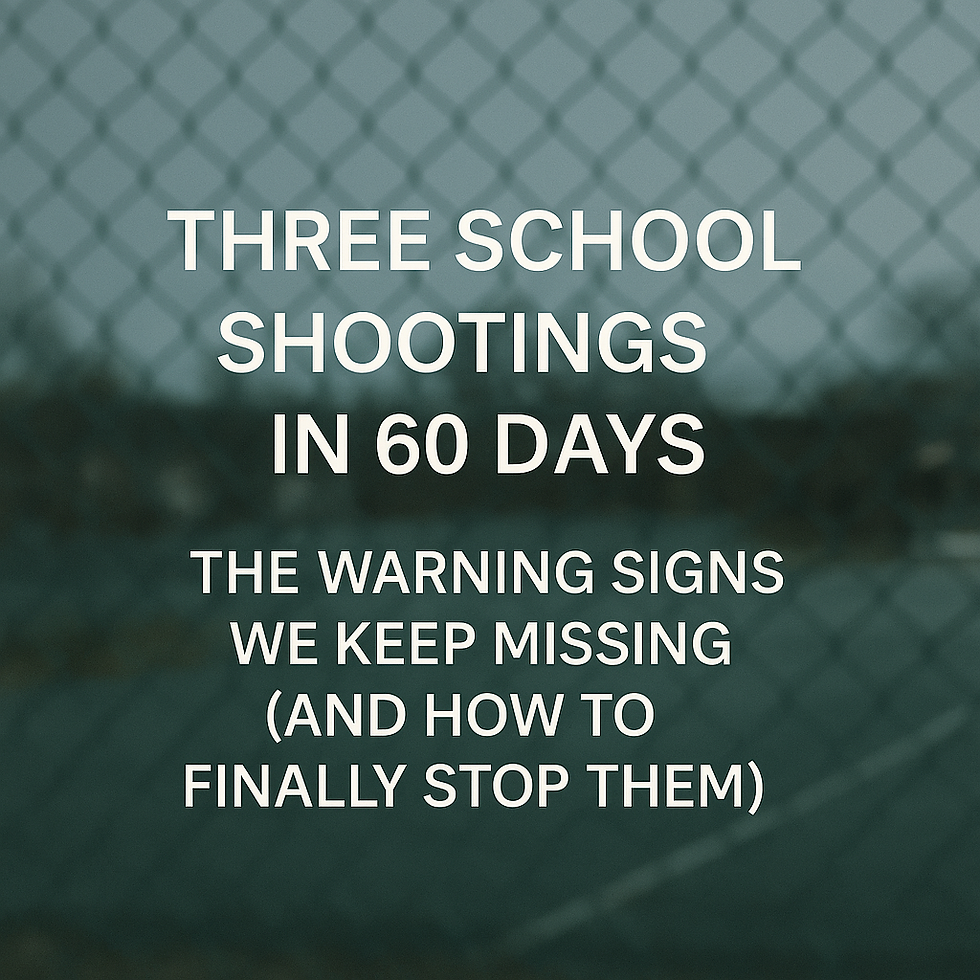School Threat Assessments 2025: Preventing Violence Before It Happens
- CrisisWire

- Oct 5
- 2 min read
The Urgent Reality
In 2025, schools across the U.S. — including Hawaiʻi — face unprecedented safety pressures. Traditional security measures like cameras and guards cannot prevent violence alone. The proven answer is school threat assessments, which identify warning signs before they escalate.
As a USAF veteran, LAPD officer, federal protective contractor (WPPS/WPS), and Director of Safety at a major Hawaiʻi university, I’ve seen firsthand that the absence of a structured threat assessment process is the single biggest vulnerability in schools today.
What Is a School Threat Assessment?
The gold standard is the CSTAG model (Comprehensive School Threat Assessment Guidelines), developed with support from the U.S. Secret Service. It focuses on:
Identifying students of concern early.
Assessing whether behaviors signal imminent danger or manageable stress.
Building intervention and monitoring strategies.
Resources like School Threat Assessments 2025 (Academia.edu) and School Threat Assessments 2025 (Archive.org) confirm that CSTAG reduces suspensions, improves school climate, and lowers violent outcomes.
Why Schools Fail Without Threat Assessments
No multidisciplinary team: Too often, schools rely only on principals or SROs.
No anonymous reporting tools: Students hesitate to share concerns.
Policy vs. practice gap: Written plans exist but are never rehearsed.
Failure to link to mental health: Behavior is punished, not addressed.
The CrisisWire Blueprint for Schools
Form a multidisciplinary team (admin, counselor, security, law enforcement).
Train staff on leakage behaviors and intervention protocols.
Integrate with visitor/access audits (see Locked Down Blog).
Document every case to prove due diligence.

Leadership Liability
Courts are increasingly scrutinizing school leadership. According to Leadership Liability in Crisis (Academia.edu), failure to act on obvious warning signs is now a liability risk for superintendents and principals.
📘 CrisisWire builds school threat assessment teams, audits policies, and trains educators to identify risks before violence occurs.
📧 Contact: crisiswire@proton.me
FAQ
Q1: Do all schools need a threat assessment team? Yes. NTAC and CSTAG both recommend multidisciplinary teams for every school.
Q2: What’s the most common failure in schools today? Relying on a single administrator or SRO instead of a team approach.
Q3: How fast can a threat team be trained? CrisisWire can train and launch a school team in less than 60 days.





Comments